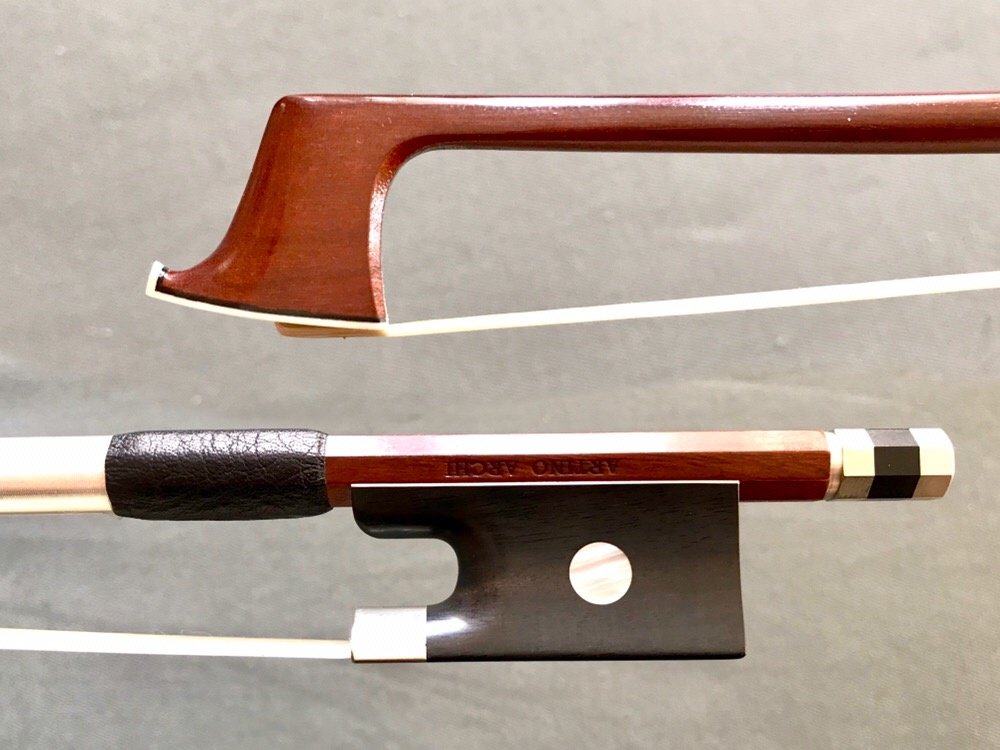A violin bow needs to be looked after, cleaned, and kept in good condition in order for it to work properly for your violin. The bow is a delicate tool and should be treated with care when cleaning it.
For this reason, it can be difficult to know exactly how to go about cleaning it, particularly if you have never done it before.
In this article we are going to be providing you with a violin bow cleaning guide, giving you the steps you will need to follow to ensure your bow stays in pristine condition.
We will also be looking at the anatomy of the bow and what it consists of. This is important to know in order to clean it adequately. So without further ado, here is our guide.

Parts of a violin bow
Before we go into the cleaning of the bow, we should first describe the makeup of the bow and the parts it consists of.
Generally, the violin bow is made from a long, shaped piece of wood known as the stick and an ebony piece of wood called the frog. The frog is movable with a screw to provide more or less tension on the bow hair.
On the stick are the winding and the grip where you hold the bow. At one end of the bow, there is the tip, and at the other end, we have the screw.
The bow hair is held in place by wooden plugs inserted in the mortise in the tip and the mortise in the frog. The bow hair is taut when playing and should be loosened when not in use.
Typically, the bow hair is made from actual hair. This is generally hair from a horse’s tail. There are sometimes synthetic hair alternatives, but it is widely thought that this is no competition compared to horsehair.
As you can imagine, the horsehair provides the biggest difficulty when it comes to cleaning because of the fact that it is a bunch of horsehair strands – around 170 horse hairs to be exact!
Also, for all of the parts of the bow, it is important that safe cleaning procedures are followed in order for you to be assured that it will work well on your violin and not potentially cause damage to the violin strings.
Cleaning rosin dust from off the bow
Rosin is the substance we put on the bow hair to help create friction between the hair and the violin strings. It is used on the bow hair for the bows of many stringed instruments.
Rosin is made from the resin of pine trees and other coniferous trees.
Rosin can cause dust and can accumulate on the bow. For this reason, it is wise to frequently wipe down the bow stick and strings with a clean, dry, and lint-free cloth before it is left to sink into the finish.
Letting the rosin build-up or accumulate anywhere on your bow or strings can be harmful and affect the sound produced by your instrument when you are playing.
General bow cleaning guide
- We recommend that you use a soft cloth that is dry, clean, and lint-free for all of your bow cleaning.
- Bow cleaning should be done with this cloth after each use, this is to ensure all rosin dust, oil, dirt, and any general household dust is removed before it has a chance to do damage to your bow.
- You can use a cloth made with cleaning instruments and bows in mind. These specialist cloths can be bought from your local music shop. However, we find that a general soft cloth works just as well.
- Treated cloths should be avoided but if they are the only tuning you have available then you must ensure that you do not use the cloth on the bow hair as this could damage it.
- There are polishers and cleansers available for bows and instruments. These can be used if you wish, provided you avoid the bow hair. However, if proper upkeep is followed for the bow then you are unlikely to need these products. You should never use a household cleaner on your bow or instrument!
Do I need to clean my bow hair?
Cleaning bow hair is never really needed as such because it is recommended that you get your bow hair changed at least once a year – if you are a professional you may even have them changed every month or so! The bow hair should not really get so dirty that you need to clean them constantly.
That being said, some people choose to clean them very gently with a toothbrush if they can see that there is a lot of rosin build-up on them.
Evergreen Workshop does not recommend cleaning your bow hair. When the hair gets dirty enough to notice we use it as a sign that you need a rehair.
Final Verdict
We hope you can see now just how easy it is to clean your violin bow. Sure, they have delicate parts which means you should not use anything abrasive on them.
However, when you consider the fact that all you really need to do is wipe down the stick with a clean, dry, and lint-free cloth after every use, you start to realize it is not that hard at all.
Thank you for reading our guide on how to clean your violin bow, we hope it has been helpful!